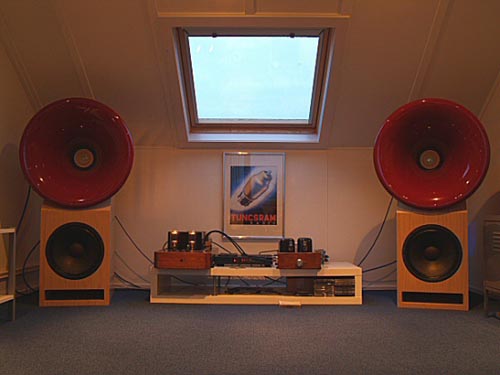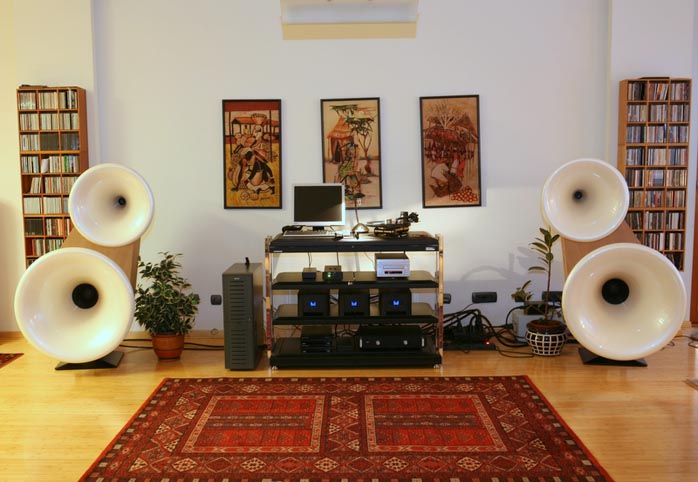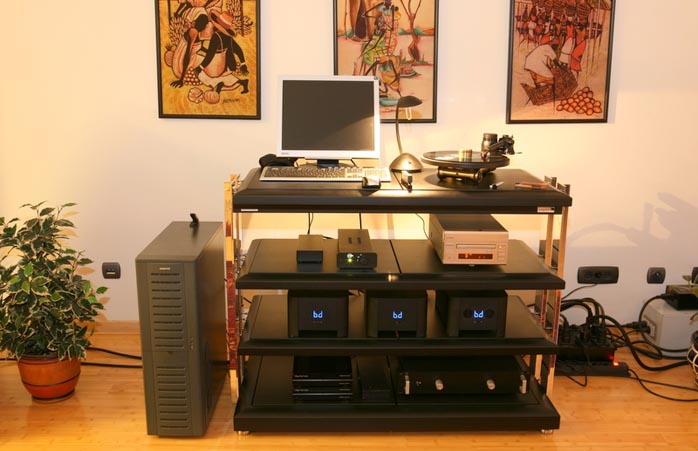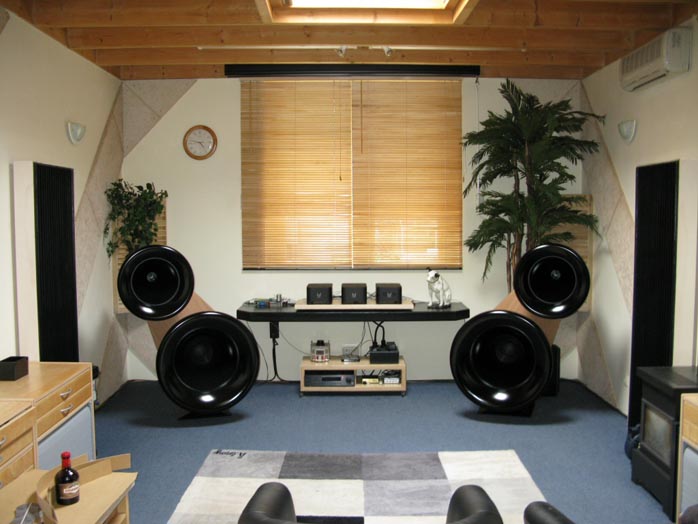|
This page is supported in part by the sponsors whose ad banners are displayed below
|
|
 |
|
|
|
 |
|
|
 |
|
Even though BD Design is a Dutch manufacturer, Gerner Christensen as we shall see is quite involved with certain key BD Design model evolutions. And he does make Serbia his home. He would be my co-host on this tour for a day. Or as Gerner put it: "Now Nenad, Solaja and I have to shuffle the cards a bit for the sake of the whole arrangement here in Belgrade. You will learn from Bert Doppenberg that these speakers of mine, which have now been commercialized via agreement by BD Design, were from the beginning my own idea from A to Z. I customized the speakers to optimize filtering and time alignment issues and added some more good speaker cabinet medicine. This created a close working collaboration between Bert and I which took 4 years due to the long physical distance separating us. My speaker building career has lasted almost 40 years and hundreds of models were designed and made by my own hands. Nowadays I don't have a big workshop as I did when I lived in Denmark. Therefore I'm forced to outsource all machining and tooling. And yes, I'm Danish and know all the guys up there."
|
|
|
|
To backtrack to the beginning, BD-Design was established in 1996 due to commercial interest in Bert's Oris horn DIY projects which provided full-range platforms for Lowther and AER drivers without using any electronic compensation. The original Oris 150 used a 78cm diameter horn while the latest developments of the Oris 250 Series support differently sized widebanders from 2" to 8" in cone diameter. Today Bert continues to offer his horns and 15" BD15 woofer to the DIY sector but "completely assembled systems are becoming more important and time consuming [Martin de Heer's system to right].
|
|
|
|
|
 |
|
| The Oris Swing MkII active loudspeaker system creates the |
|
Serbian connection, having originally been custom-designed and built for Gerner Christensen. Explained Bert: "Gerner (DIYer for many years) was building his loudspeaker systems rather differently from my philosophy but we both were seeking for the holy grail. Being friends with Steen Duelund for many years helped Gerner learn all about loudspeaker crossover techniques (and rather different ones than commonly used) whereby phase coherence and the whole speaker acting as a point source are the key to success. Using widebanders alone creates too many limitations in both the low and high frequencies. We felt it necessary to use multiple drivers. That's where Gerner's crossover methods and my philosophy intersected."
|
|
 |
|
|
|
Gerner's system with cosmetically 1st-generation Crazy electronics
|
|
|
|
"To sum up the major design criteria and details of the system you will hear:
- Extremely high sensitivity at 115dB/1W/1m
- Controlled directivity reduces disturbing reflections
- Point source radiation from 270Hz to 22kHz using a coaxial compression driver crossing at 7kHz
- Coherence from Duelund crossover methods
- Integration from using passive line level filtering for the active bass, using the main signal and establishing similar behavior for both drivers in the crossover range
- Extremely stiff, good-looking and functional bass enclosure for the system (24Hz up to 270Hz) based on a complex internal matrix construction with unevenly sized chambers to prevent any internal or external resonance disturbances
- "Swing" construction (the ability to change the angle of the system for a wider or smaller image presentation or different system appearance).
|
|
 |
|
|
|
"The Crazy line are complementary electronics to sell a complete concept system around the Oris Swing MkIIs. The CrazyA wide-bandwidth amplifier (-3dB @ 210kHz) came to life after a long and thorough search for a better amplifier (sound wise and with lower power consumption) than the tube amplifiers we used before. Later the CrazyV TVC-based attenuator was born and after a long development period, the CrazyT DAC for digital playback through a PC-based system was launched. The converter is based on a twin multi-bit chip without oversampling or filtering and a transformer-based output section without active elements in the analog stage." For RMAF 2008, I learned, the CrazyT would be used by Nenad and Alex to create a further tie-in to our Serbian tour.
|
|
 |
|
|
|
Bert's setup
This stop on our tour promised a quick immersion into ultra high-efficiency horn speaker sound coupled to specially tuned transistor amps, a transformer volume control and NOS converter, with the entire system envisioned and designed as a system to presumably make the exact sound I'd hear portable (minus the room of course but the controlled dispersion of horn speakers does minimize the usual room interactions to quite an extent). More after the visit of course...
|
|
 |
|
|
|
|
|
|
|
 |
|
 |
|
|
|
|
 |
|
|
|
|
|
|
|
|
|
|
|
|
|